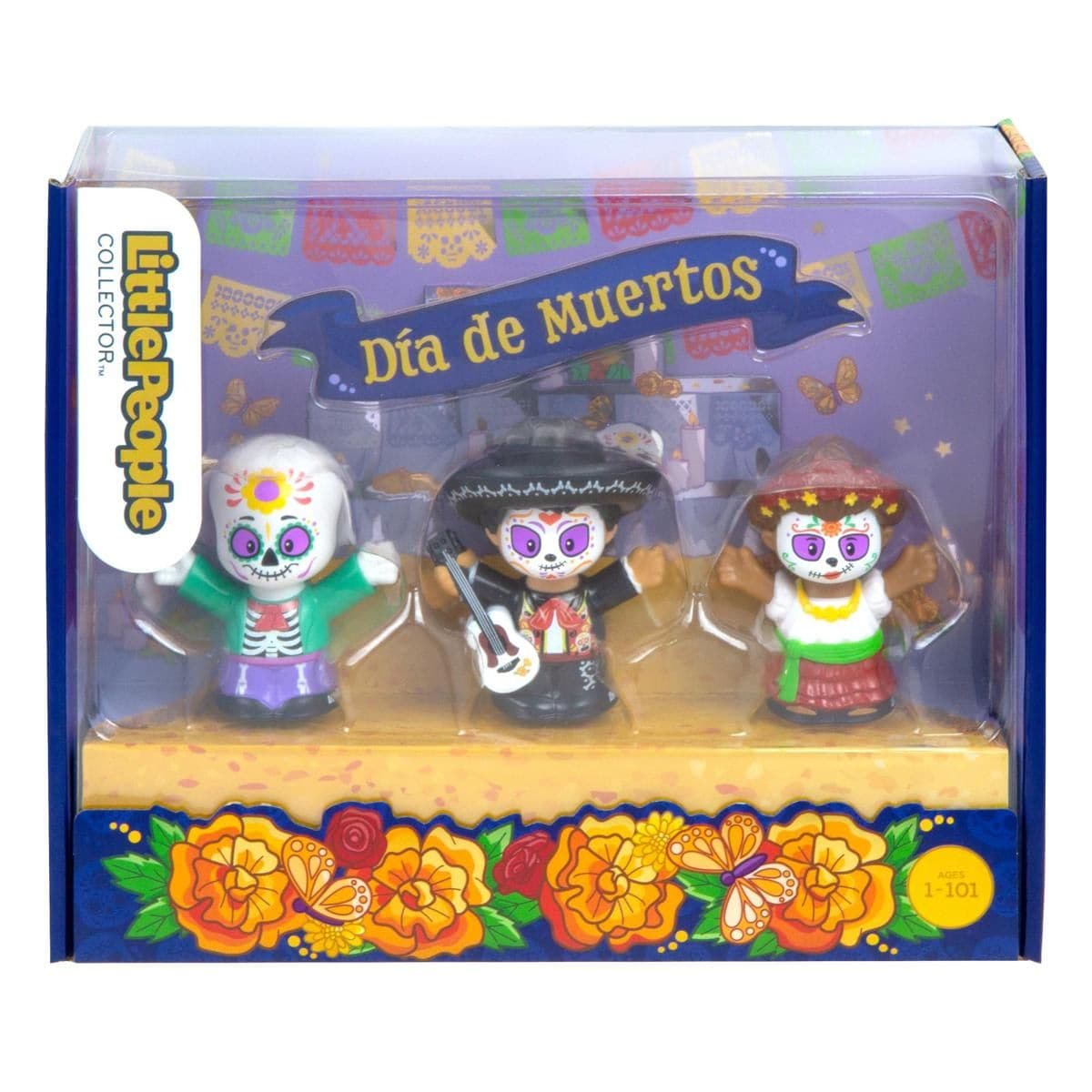Thanks to Fisher-Price, we can celebrate the living and the dead ahead of Día de Muertos with the newly launched Fisher-Price Little People Collector figure set. To honor the holiday for the millions that celebrate and to expose people unfamiliar with the tradition and rich meaning, this set features the annual tradition’s iconic motifs throughout.
Adorned with calaveras (skulls) and bright cempasúchiles (marigolds), the vibrant set features three 2.5-inch Little People donning traditional celebratory garb, including a woman dressed in a traditional ruffled dress and cempasúchils, also known as “flowers of the dead,” whose fragrance is said to guide souls to their altar and their waiting families.
A man with a sombrero and guitar, as musicians are known to play guitars throughout graveyards to serenade the dead. A joyous calacas (skeleton), a notable symbol for Día de Muertos with a custom-designed skull, and brightly colored papel picado frames the three-tiered entrance, decorated with traditional and symbolic elements of Día de Muertos, including candles and incense to guide the spirits home. On the altar, Pan de Muerto is left as an ofrenda (offering).
Celebrants and collectors can head to Amazon and other retailers nationwide to purchase the Fisher-Price Little People Collector Día de Muertos ahead of the upcoming holiday on November 1.
Día de Muertos is a Catholic holiday celebrated in Mexico and elsewhere that observe All Saints’ Day and All Souls’ Day. The two-day festivities (November 1 and 2) involve prayers, ofrendas, parades, cookouts, and more. It is unknown the exact period this tradition started; however, some Mexican academics believe it has indigenous pre-hispanic roots, while others think that it might be a 20th-century tradition adapted from Spain to encourage Mexican nationalism.
In other Spanish-speaking countries, the festivity is part of the Hispanic Catholic festival and is commonly called Día de Los Muertos, or Día de Los Fieles Difuntos. The observance in Mexico has become a national symbol; therefore, in 2008, a committee requested UNESCO to adopt a plan to declare the tradition an Intangible Cultural Heritage of Humanity.
,type=downsize)
